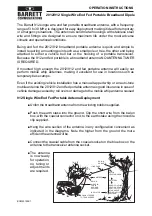
53
19.2 Reception in remote areas
State-of-the art digital technology can considerably enlarge the area in
which a satellite can be received.
Most satellites broadcasting channels of interest to Central European
viewers are aimed at Central Europe. In locations outside this area, the
antenna has a lateral "view" on the satellite. This effect is known as the
"skew angle" or "polarization angle" and occurs particularly in southern
regions such as Portugal, Spain, Morocco, Greece, Turkey, and most
extremely on the Canary Islands.
This effect is mostly compensated by the receiver's electronics, but
sometimes requires some manual fine-tuning by pivoting the LNB
(reception head) or the complete flat-panel antenna by some degrees.
The following definitions apply to the following tables and angles:
To determine the sense of rotation, the viewer looks towards the
satellite from the perspective of the antenna. Accordingly, the viewer is
located behind the antenna or at its side. Depending on the antenna
model, either the LNB in front of the antenna dish (Oyster®), the LNB
within the antenna (Cosmo®) or the complete antenna (Caro®) must be
turned.
•
Rotations in CLOCKWISE direction are negative (—).
•
Rotations in COUNTERCLOCKWISE direction are positive (+).
•
A rotation in "+" direction hence means that the BOTTOM of the
LNB or antenna is turned to the RIGHT.
•
A rotation in "—" direction hence means that the BOTTOM of the LNB
or antenna is turned to the LEFT.















































